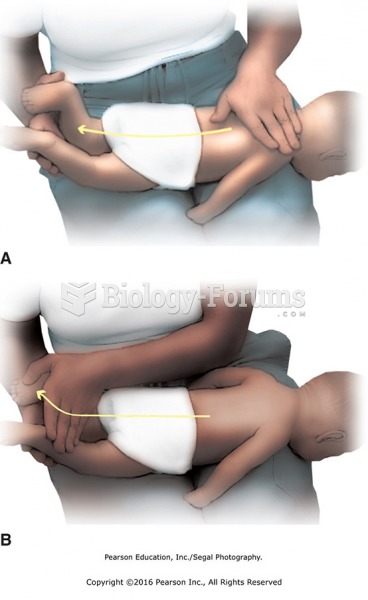|
|
|
After a vasectomy, it takes about 12 ejaculations to clear out sperm that were already beyond the blocked area.
People with high total cholesterol have about two times the risk for heart disease as people with ideal levels.
Liver spots have nothing whatsoever to do with the liver. They are a type of freckles commonly seen in older adults who have been out in the sun without sufficient sunscreen.
In 1835 it was discovered that a disease of silkworms known as muscardine could be transferred from one silkworm to another, and was caused by a fungus.
ACTH levels are normally highest in the early morning (between 6 and 8 A.M.) and lowest in the evening (between 6 and 11 P.M.). Therefore, a doctor who suspects abnormal levels looks for low ACTH in the morning and high ACTH in the evening.
 The left-hand rule states that if a coil is grasped with the left hand, the fingers will point in ...
The left-hand rule states that if a coil is grasped with the left hand, the fingers will point in ...
 Using the same hand position as in Step 3, apply circular friction along paraspinal muscles of the ...
Using the same hand position as in Step 3, apply circular friction along paraspinal muscles of the ...
 Apply passive touch on the shoulder and hip. Stand in back and place one hand on the shoulder and ...
Apply passive touch on the shoulder and hip. Stand in back and place one hand on the shoulder and ...




